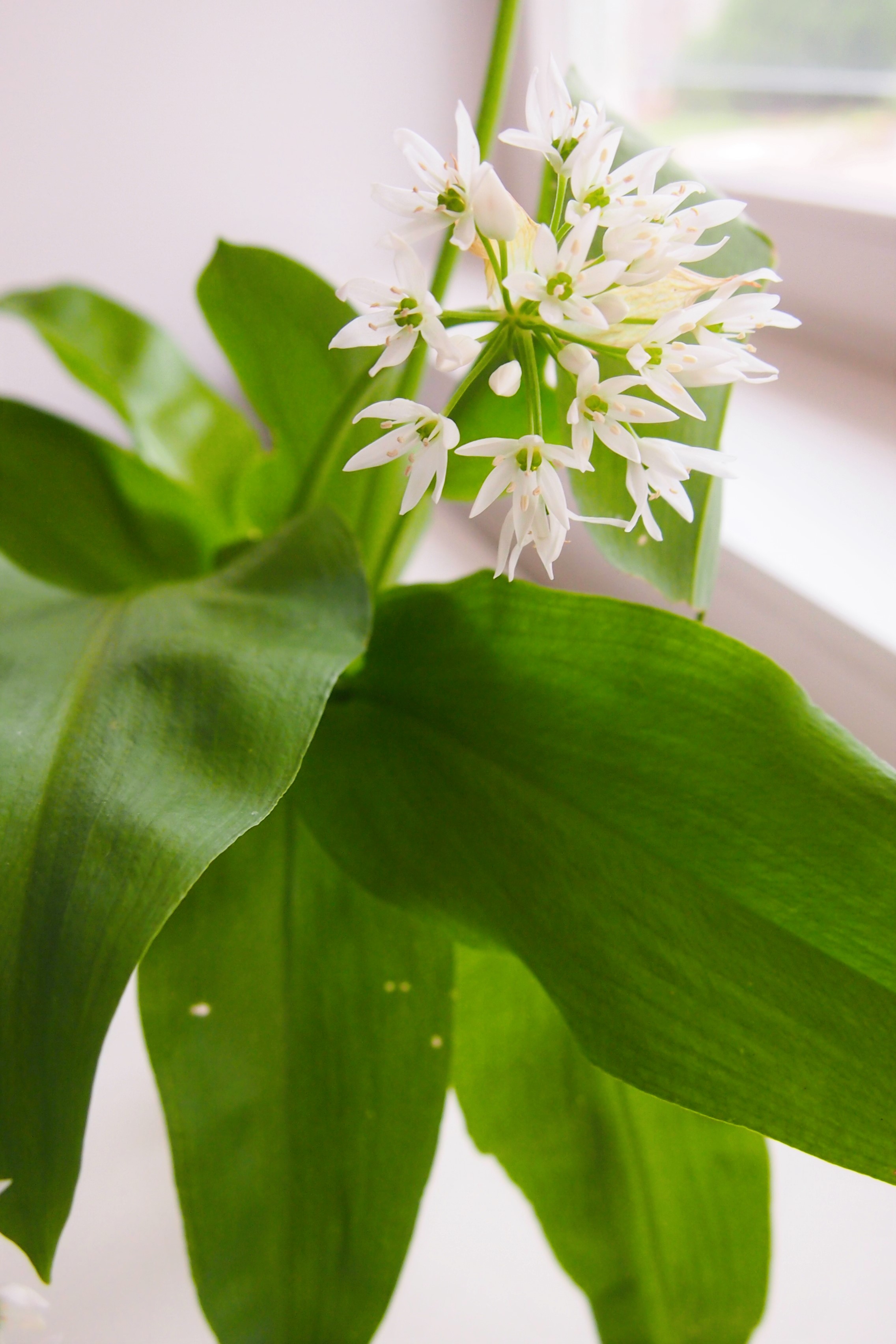
- English: wild garlic, ramsons, buckrams, wood garlic, bear’s garlic
- Scientific name: Allium ursinum
- French: ail des ours
- Español: ajo de oso
- Deutsch: Bärlauch, Bärenlauch, Knoblauchspinat, wilder Knoblauch, Waldknoblauch, Hexenzwiebel, Zigeunerlauch, Ramsen, Waldherre
- Nederlands: Daslook
The wild garlic is a native of northern Europe and northern Asia. It grows wild on forest floors and is protected by European law against harvesting for commercial reasons. In spring, they blossom in the ancient woodlands where they thrive and fill the air with garlicky fragrance. The presence of wild garlic is a sign that the woodlands being very old and untouched by humans.
Ancient Germanic peoples knew about the wild garlic and consider them as a protective charm. This belief has survived until today as the idea that ‘garlic protects one against vampires’. Even recent times, pregnant women keep wild garlic leaves in their pocket to ensure the safe delivery of their baby.
One should be careful when plucking wild garlic leaves. They grow very close to Lily of the Valley, Colchicum autumnale and Arum maculatum – all three are extremely poisonous. The Eurasian wild garlic is also not the same as the North American wild leek or ‘ramps’ (Allium tricoccum) and the Eurasian broadleaf wild leek (Allium ampeloprasum).
How to eat wild garlic?
Wild garlic is a lot milder than the garlic bulbs we are used to. It is appreciately for its fragrance more than anything else. So you can easily add wild garlic leaves (they barely have a bulb) to your salads. You can also lightly grill wild garlic leaves with young carrots and courgette, and serve them with a meat dish like a good beef steak. Otherwise, as a delicacy, wild garlic is best chopped and cooked in an omelette with shaved black truffles.


1 Comment